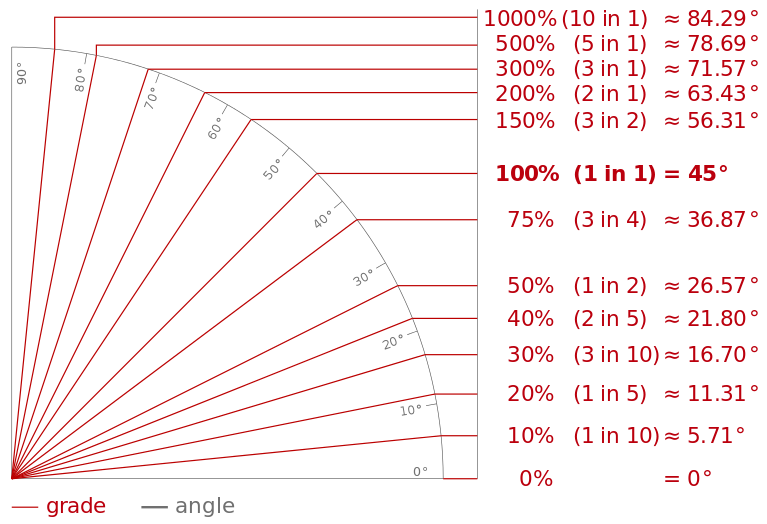Spoiler
 Thad Jantzi, on 27 June 2013 - 10:21 AM, said:
Thad Jantzi, on 27 June 2013 - 10:21 AM, said:
Okay everybody, listen up - this is important.
The upcoming patch brings with it dramatic changes in the way your mech will interact with sloped ground. Gone are the days of running up a 75° slope as though it was no more than a gentle incline. Mechs will now have to work harder to climb slopes, and the threshold at which slopes cease to be traversable will be considerably lower than it was before.
In this post I will explain exactly how these changes will affect each type of mech, and we will include color-coded maps depicting the severity of the slopes in every level so that we can all have a reference as to where our mechs can go, where our mechs can't go, and where we can expect the mechs to slow down.
For the purposes of these movement changes, there are five movement archetypes. Each one has a different threshold at which its Mechs will begin to slow down. I'll call this SlowdownAngle. The SlowdownAngle is different for each archetype. Here is a list of the archetypes, and which mech belongs in which archetype. You will notice that the archetype does not necessarily coincide with the mech's weight class.
Tiny: Jenner, Commando, Spider
SlowdownAngle: 40°
Small: Raven, Cicada
SlowdownAngle: 35°
Medium: Blackjack, Centurion, Dragon, JagerMech, Trebuchet, Cataphract, Hunchback
SlowdownAngle: 30°
Large: Quickdraw, Stalker, Awesome, Catapult
SlowdownAngle: 25°
Huge: Atlas, Highlander, Victor
SlowdownAngle: 20°
In addition to the SlowdownAngle, there is a slope level which no mech can traverse. That angle is 45°. For an easy reference as to which slopes are 45°, take a look at Alpine Peaks. Where you see white snow, the slope is less than 45°. Where you see dark coloured rock, the slope is greater than 45°, and you cannot climb it.
So, the easy rule to remember is that every mech can travel over any slope less than 20° with no slowdown whatsoever, and at any 45° slope the mech's movement is reduced to 0. These slowdowns aren't instant, so there is the potential for an extremely fast mech to gather enough momentum to travel some way up a slope of 45° or greater, but in most cases a 45° slope acts, in effect, as a wall. In addition, I should also note that running into an actual vertical wall reduces the mech's forward movement considerably, so you will no longer have the ability to navigate by perpetually bumping into stuff.
To compute how much of a slowdown you can expect on a particular slope, the formula is quite simple. Just less than your mech's SlowdownAngle, you'll be going at 100% speed. At 45° you'll be going at 0% speed. In between those two values, the slowdown is linear.
For example, the Catapult is a member of the "large" movement archetype, whose SlowdownAngle is 25°. If a Catapult walks up a slope of 35° (halfway between the SlowdownAngle of 25° and the StopAngle of 45°) it will be traveling at 50% of its normal speed. On a 30° slope it would travel at 75% of its normal speed, and on a 40° slope it would travel at 25% of its normal speed.
Some maps this won't make a lick of difference. Others it will completely transform. I urge everyone to carefully inspect the following diagrams and see if your usual routes or favourite spots are going to be compromised by these changes. You can't climb up the sheer cliff walls on Alpine Peaks any more. You can't scoot up to the top of the crystal shards on Tourmaline Desert any more. The high ground in Canyon Network is nowhere near as accessible as it once was.
It has been my experience that these changes make for a dramatically improved gameplay experience and I hope that will be the case for everyone else too.
Thanks for listening. As you were.
The upcoming patch brings with it dramatic changes in the way your mech will interact with sloped ground. Gone are the days of running up a 75° slope as though it was no more than a gentle incline. Mechs will now have to work harder to climb slopes, and the threshold at which slopes cease to be traversable will be considerably lower than it was before.
In this post I will explain exactly how these changes will affect each type of mech, and we will include color-coded maps depicting the severity of the slopes in every level so that we can all have a reference as to where our mechs can go, where our mechs can't go, and where we can expect the mechs to slow down.
For the purposes of these movement changes, there are five movement archetypes. Each one has a different threshold at which its Mechs will begin to slow down. I'll call this SlowdownAngle. The SlowdownAngle is different for each archetype. Here is a list of the archetypes, and which mech belongs in which archetype. You will notice that the archetype does not necessarily coincide with the mech's weight class.
Tiny: Jenner, Commando, Spider
SlowdownAngle: 40°
Small: Raven, Cicada
SlowdownAngle: 35°
Medium: Blackjack, Centurion, Dragon, JagerMech, Trebuchet, Cataphract, Hunchback
SlowdownAngle: 30°
Large: Quickdraw, Stalker, Awesome, Catapult
SlowdownAngle: 25°
Huge: Atlas, Highlander, Victor
SlowdownAngle: 20°
In addition to the SlowdownAngle, there is a slope level which no mech can traverse. That angle is 45°. For an easy reference as to which slopes are 45°, take a look at Alpine Peaks. Where you see white snow, the slope is less than 45°. Where you see dark coloured rock, the slope is greater than 45°, and you cannot climb it.
So, the easy rule to remember is that every mech can travel over any slope less than 20° with no slowdown whatsoever, and at any 45° slope the mech's movement is reduced to 0. These slowdowns aren't instant, so there is the potential for an extremely fast mech to gather enough momentum to travel some way up a slope of 45° or greater, but in most cases a 45° slope acts, in effect, as a wall. In addition, I should also note that running into an actual vertical wall reduces the mech's forward movement considerably, so you will no longer have the ability to navigate by perpetually bumping into stuff.
To compute how much of a slowdown you can expect on a particular slope, the formula is quite simple. Just less than your mech's SlowdownAngle, you'll be going at 100% speed. At 45° you'll be going at 0% speed. In between those two values, the slowdown is linear.
For example, the Catapult is a member of the "large" movement archetype, whose SlowdownAngle is 25°. If a Catapult walks up a slope of 35° (halfway between the SlowdownAngle of 25° and the StopAngle of 45°) it will be traveling at 50% of its normal speed. On a 30° slope it would travel at 75% of its normal speed, and on a 40° slope it would travel at 25% of its normal speed.
Some maps this won't make a lick of difference. Others it will completely transform. I urge everyone to carefully inspect the following diagrams and see if your usual routes or favourite spots are going to be compromised by these changes. You can't climb up the sheer cliff walls on Alpine Peaks any more. You can't scoot up to the top of the crystal shards on Tourmaline Desert any more. The high ground in Canyon Network is nowhere near as accessible as it once was.
It has been my experience that these changes make for a dramatically improved gameplay experience and I hope that will be the case for everyone else too.
Thanks for listening. As you were.


 This topic is locked
This topic is locked





























